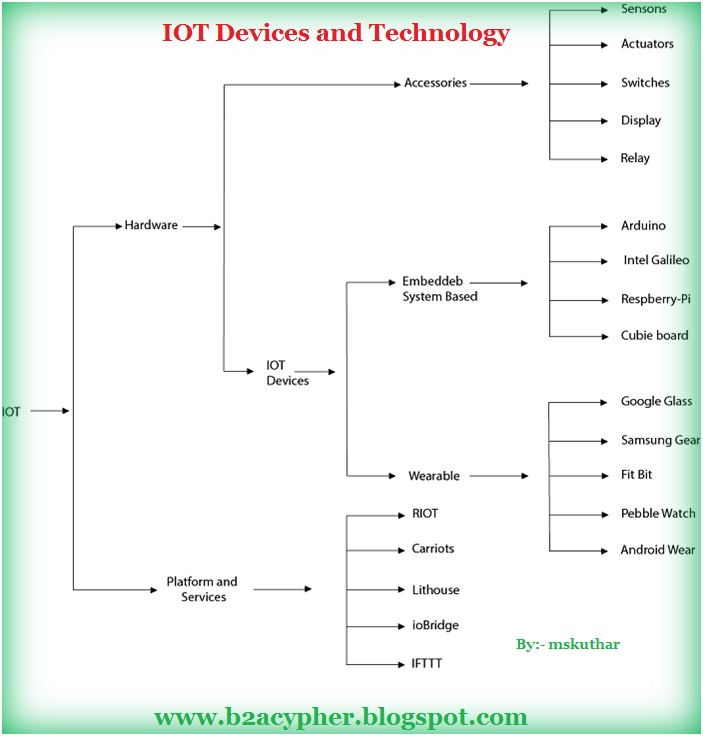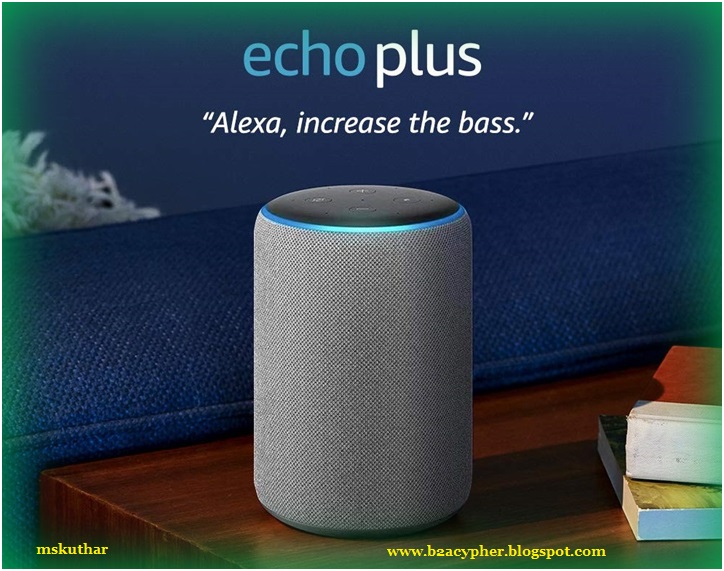IoT Devices and Platform
- Internet of Things (IoT) gadgets are non-standard devices that can connect wirelessly to a network and exchange data.
- IoT devices extend internet connectivity beyond traditional devices like smartphones, laptops, tablets, and desktop computers.
- We can connect and interact across networks by embedding these devices with technology, and they can be remotely monitored and controlled.
- Based on the IEEE 802.15.4 standard, a wide range of IoT devices are available.
- Wireless motes, attachable sensor boards, and interface boards are among the gadgets available to researchers and developers. Computers, software, wireless sensors, and actuators are examples of IoT devices.
- These IoT gadgets are connected to the internet, allowing data to be sent between items or people without the need for human involvement.
The following are some of the most frequent and popular IoT devices:
 |
| IOT Devices |
Arduino Device:
- Arduino microcontrollers and microcontroller kits are used to create digital devices that can sense and control items in both the physical and digital worlds.
- Arduino boards come with a number of digital and analogue input/output pins that may be used to connect to a variety of different circuits.
- The USB (Universal Serial Bus) port on some Arduino boards is used to load applications from a computer.
Intel Galileo:
- The Intel Galileo Gen 2 Board comes with components such an Intel Quark SoC CPU, 256MB of RAM, various connectors, and Arduino compatibility.
Samsung Gear Fit:
- The Samsung Gear Fit is a dust- and water-resistant fitness tracker with a curved display and a long-lasting battery.
- This gadget receives email and text message notifications and is compatible with Samsung's S Health app.
Google Home Mini:
- One of the most popular IoT devices nowadays is the Google Home voice controller.
- It has voice-activated features such as alarms, lights, thermostats, audio control, and more.
Sensor:
- A sensor is a device that detects ambient temperature, humidity, light, and air quality control, among other things.
- There are several sorts of sensors that can read various types of data.
- These data are transmitted by the sensors over the networks to which they are attached.
Bluetooth Low Energy (BLE) Intelligent Beacon:
- The item is tracked in real time using a Bluetooth low energy beacon device. Many businesses use it to track the whereabouts of their employees, assets, patients, and other personnel in real time.
- Manufacturing, retail, and healthcare services are the primary focus of this service.
Amazon Echo Plus:
- Another popular and dependable IoT gadget is the Amazon Echo Plus voice controller.
- It has voice-activated features like as answering phone calls, setting timers and alarms, checking the weather, and more.
August Doorbell Cam:
 |
| August Doorbell Cam |
- August Doorbell Cam is an Internet of Things (IoT) gadget that allows you to answer your door from anywhere.
- It records motion changes and suspicious activities at your front door on a continuous basis.
August Smart Lock:
 |
| August Smart Lock |
- August Smart Lock is a tried-and-true security IoT gadget that allows customers to control their doors from afar.
- It deters criminals and adds an extra layer of protection to your house.
Foobot.
- Foobot is an Internet of Things (IoT) gadget that can precisely assess indoor pollution. It aids in the improvement of indoor air quality in homes, cafés, offices, and other public locations.
IoT Devices' Characteristics....
- Sense: The gadgets that sense their surroundings in terms of temperature, movement, and the appearance of things, among other things.
- Data transmission and reception: IoT devices may transmit and receive data through a network connection.
- Analyze: The gadgets are capable of analyzing data received from other devices via internet networks.
- Controlled: IoT devices may also be controlled from an endpoint. Otherwise, the IoT devices will continue to connect with each other indefinitely, resulting in system failure.
Tags:
Arduino Device
b2acypher
Bluetooth Low Energy (BLE) Intelligent Beacon
Intel Galileo
IoT Devices
mskuthar
Sensor








